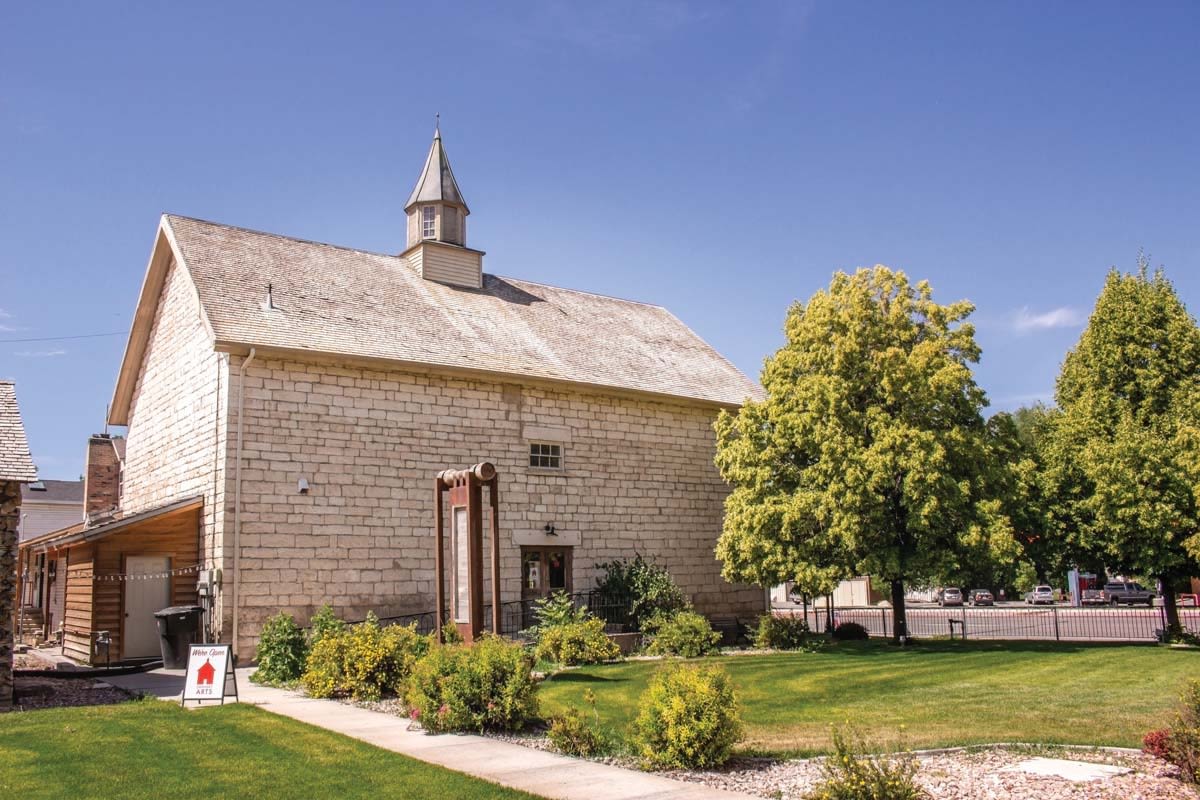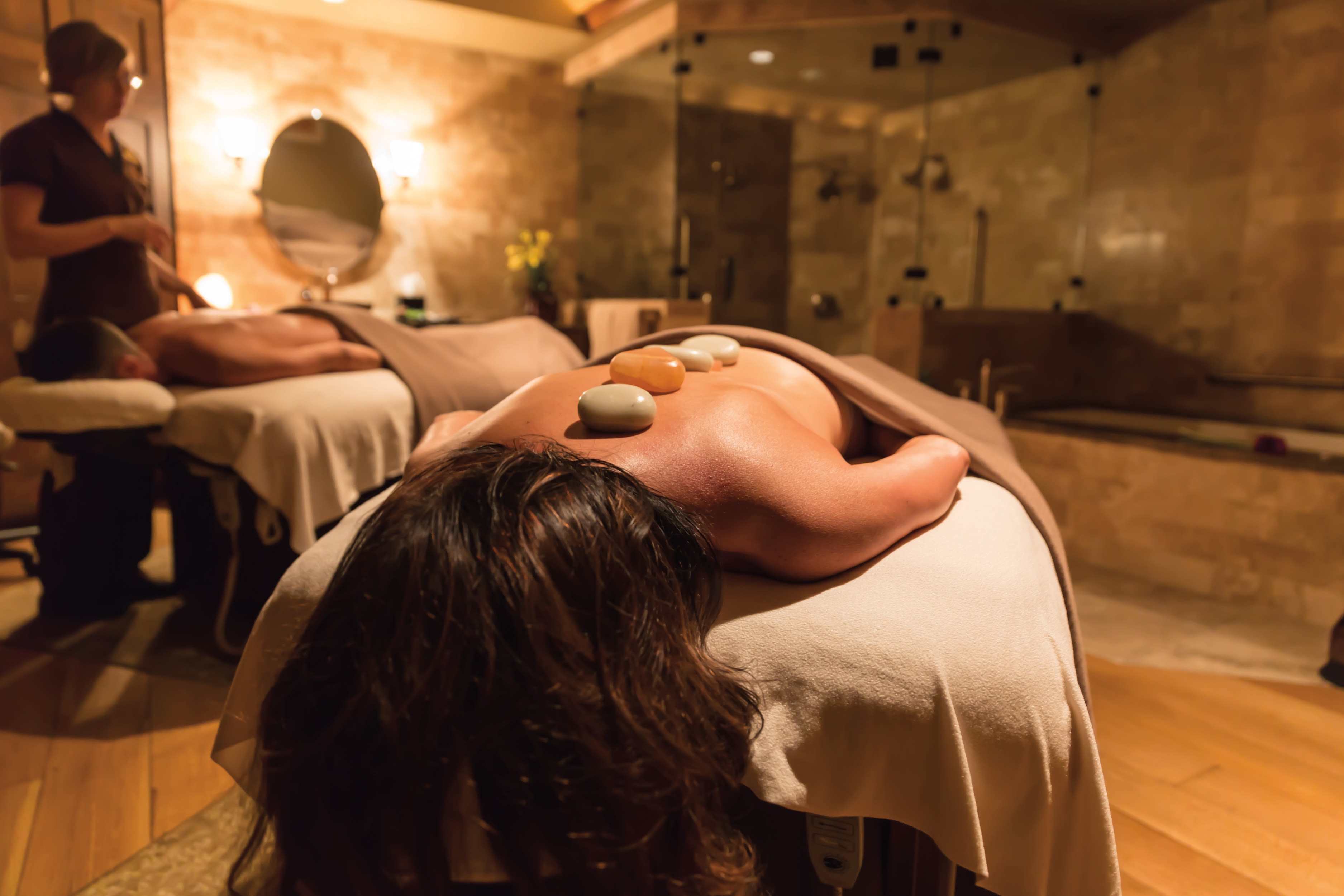Everything You Need to Know to Plan An Unforgettable Backcountry Powder Trip
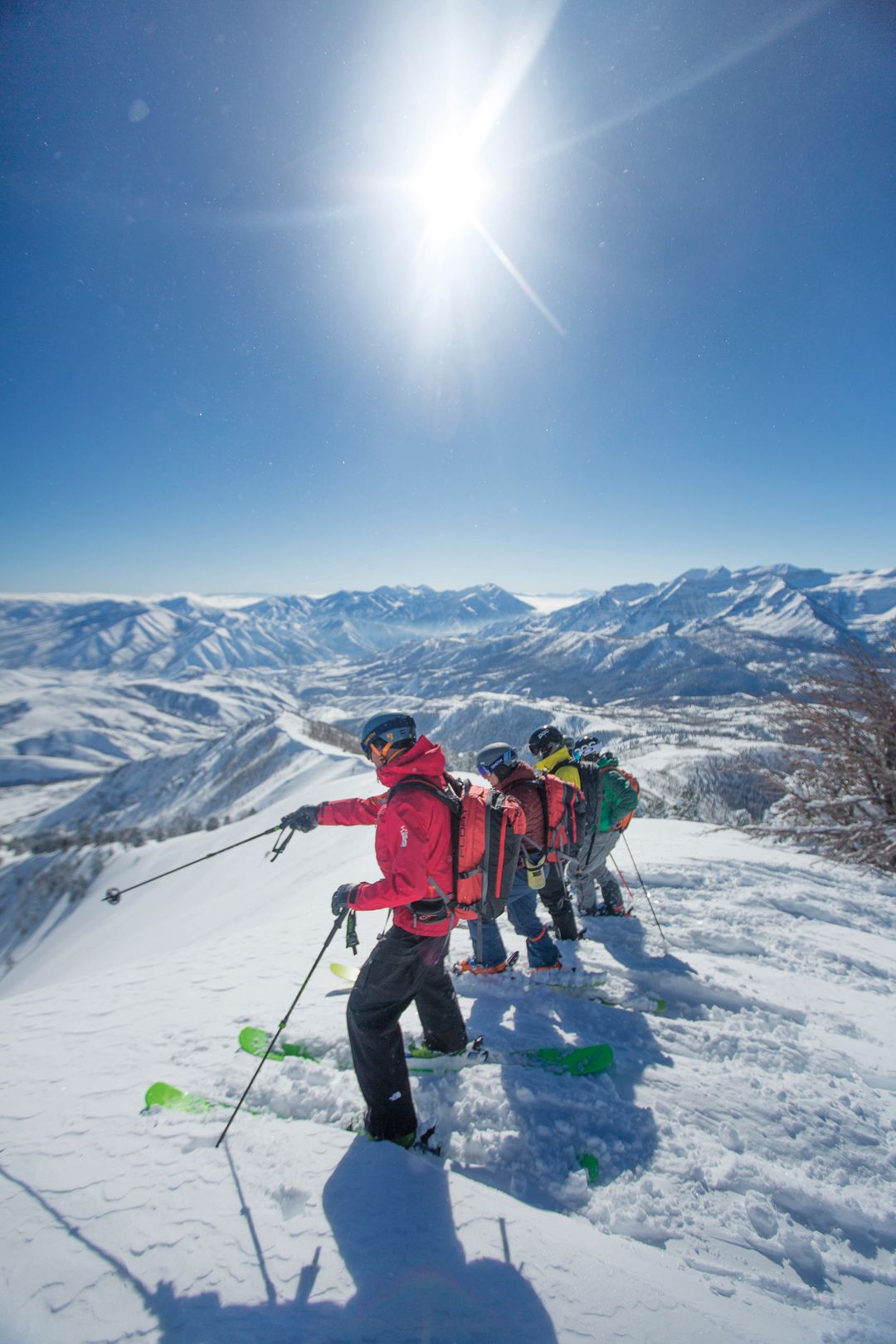
Scoping out a backcountry line with the Wasatch Powderbird Guides
Image: Powderbird Helicopter Skiing
If you love sliding on snow as much as we do, then you’re already familiar with the three most prevalent modi operandi for skiing or riding in the backcountry: helicopters, snowcats, and touring (i.e., via your own steam). Beyond providing rock-star access to untracked snow, each method offers a distinctly different way to experience the backcountry. Here’s a breakdown of these bucket-list jaunts. Who knows, it just might be the nudge you need to book that off-piste day you’ve always dreamed of.
Helicopter Skiing
There’s good reason why helicopter skiing sits atop every outdoor adventurer’s life agenda, not just diehard skiers. Rising straight up into the sky, taking in a literal bird’s-eye view of the mountains, and then gently touching down minutes later on top of a glittery, untracked slope is such an incredible experience, the skiing itself is almost anticlimactic. Almost. And this once-in-a-lifetime plunge is not just for elite-level skiers. “As long as you can comfortably ski an ungroomed blue or black run at most Western ski resorts from top to bottom without stopping, you can go helicopter skiing,” says Jared Grant, general manager of Wasatch Powderbird Guides (Westgate Resort, 3000 Canyons Resort Dr, 801.742.2800).
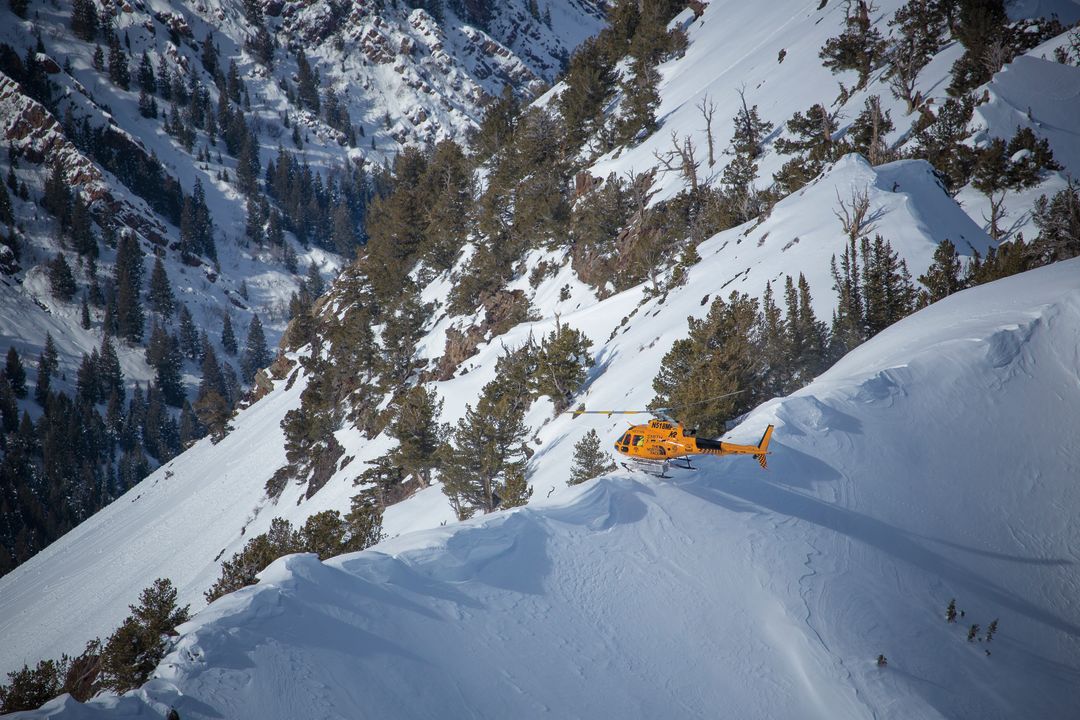
Wasatch Powderbird Guides has access to more than 100,000 acres throughout the Wasatch Range.
Image: Powderbird Helicopter Skiing
A day spent with WPG begins with an early-morning wakeup call, a sit-down breakfast with the guides at Westgate Resort for a safety orientation and equipment issue (avalanche transceiver and airbag), a quick van ride to the launchpad, and typically a 9 a.m. departure in the heli. WPG tours include seven flights and six to seven runs somewhere in WPG’s permit area, which covers more than 100,000 acres of the Wasatch Range from Francis Peak (near Ogden) in the north to Provo in the south. Groups are limited to four skiers and one guide per helicopter. The day ends with an après lunch back at Westgate Resort at about 2 p.m.
Good to Know: Helicopter skiing tends to attract a Type-A clientele, setting the stage for a vibe that can be intense at times, though WPG does offer a private-group option providing a more chill experience. Heli-skiing is not hugely social; noise in the aircraft makes conversation between runs difficult. And if the weather is stormy, your tour may need to be rescheduled, since helicopters cannot fly in inclement weather.
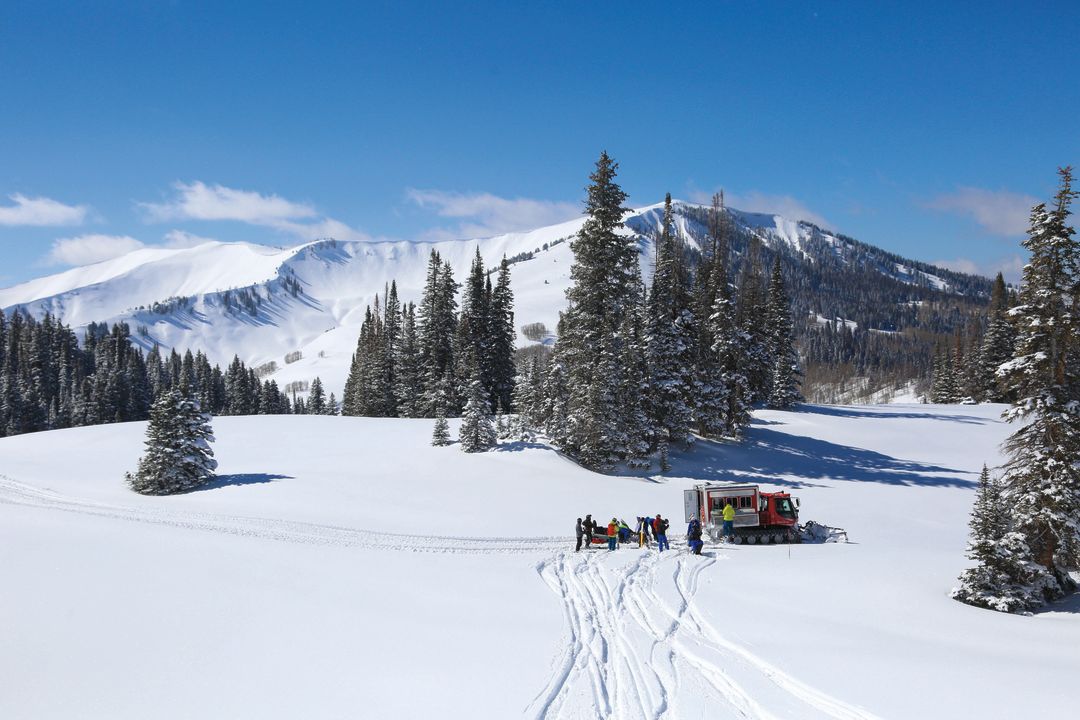
Park City Powder Cats operate on pristine private land in the Uinta Mountains.
Image: Rebekah Stevens
Snowcat Skiing
Once used exclusively to drag around grooming machines inside ski resort boundaries, snowcats are now outfitted with large passenger cabs to transport skiers and riders to the sidecountry (areas adjacent to ski areas) and backcountry. And while the turns you’ll get are just as epic as the ones bagged via helicopter, the overall experience is much more low-key. “Our guests love how they can warm up, rest, and talk to their friends, or people who come from all over the country, as they ride with us in the cat between runs,” says Rebekah Stevens, marketing manager for Utah snowcat skiing pioneer Park City Powder Cats, (8340 E Weber Canyon Rd, Oakley, 435.649.6596).
Days at PCPC begin at 8:30 a.m. with a generous continental breakfast, orientation, and avalanche transceiver distribution at the company’s charmingly rustic base operations cabin, located 27 miles northeast of Park City just outside of Oakley. At around 9:15 a.m., guests climb into the cat, then spend an entire day skiing (usually about 8 to 10 runs) on terrain varying from challenging steeps to mellow bowls within the private, 43,000-acre Thousand Peaks Ranch, including a stop for hot soup and sandwiches around midday.
Good to Know: While the rides between runs, 20 minutes or so, allow plenty of time to yuk it up with your buddies or meet like-minded folk from around the globe, all the stopping and starting may make you feel like you never quite get warmed up. And though PCPC has snacks and hot drinks waiting for guests back at the cabin at the end of the day, they are not licensed to serve alcohol. That kind of après will have to wait till you return to Park City.
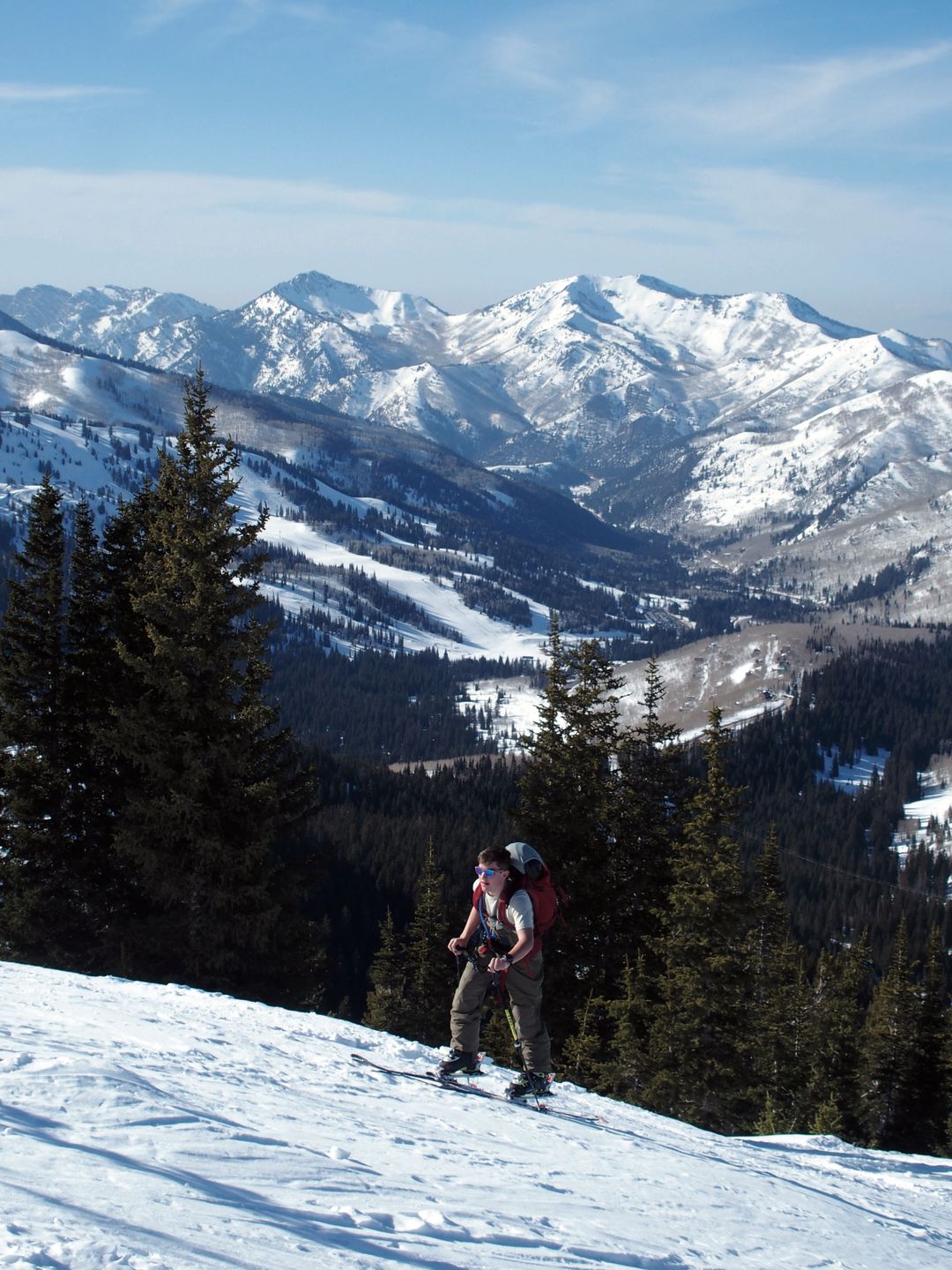
Heading for the Park City ridgeline with Utah Mountain Adventures
Image: Utah Mountain Adventures
Ski Touring
Maybe it’s the endorphins all the physical effort produces, but an almost Zen-like, fully immersive nature experience best describes what many people encounter while ski touring. The fitness requirements are obviously a little more rigorous than those necessary for helicopter or snowcat tours. “Our typical guest is a summer hiker or cyclist who normally skis at the local resorts but would traverse or hike up for untracked powder, even when they are skiing inbounds,” says Tyson Bradley, owner and lead guide for the Salt Lake City–based Utah Mountain Adventures (801.550.3986).
UMA’s ski and splitboarding (snowboarding) tours depart from Alta, Snowbird, and Brighton ski resorts, as well as trailheads in Mill Creek and Big and Little Cottonwood Canyons. The outfit’s permit area includes some of the Wasatch’s most coveted routes and peaks on both the front side of the range (Mt Superior and Pfeifferhorn peak) and along the Park City ridgeline (Peak 10,420, Willow Fork, and Bear Trap).
Expect to climb (and later descend) 2,000 to 4,000 vertical feet during a day with UMA, though, Bradley says. “An experienced backcountry skier going out with us to pursue a bigger objective, like a high ridge, peak, or ski line in the Olympus, Lone, or Twin Peak Wilderness areas might gain more than that—probably around 5,000 to 10,000 feet—during a long, strenuous tour.”
Good to Know: A day of guided backcountry skiing is taxing for even the fittest among us. If you’re not into being on your feet and moving on your own steam for most of an eight-hour day while carrying a pack and being exposed to the elements, it may not be for you.
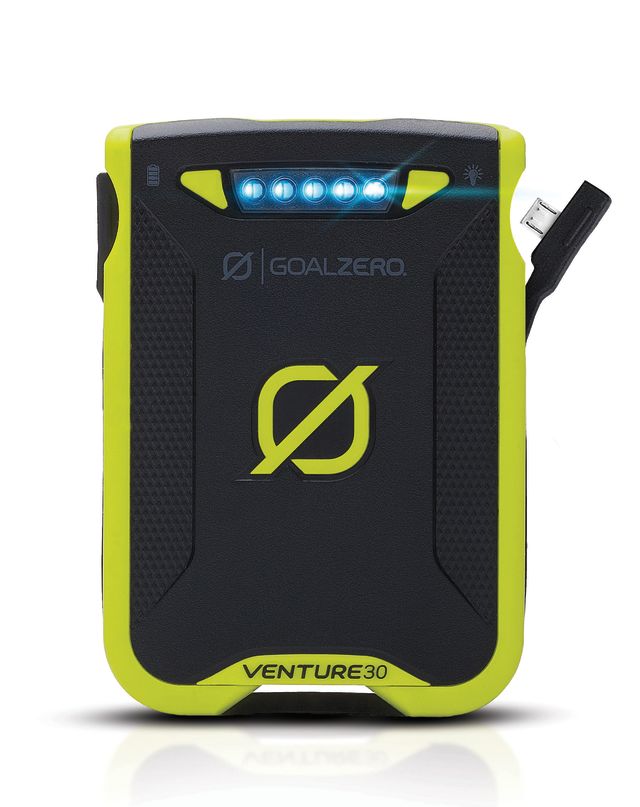
Recharging pack from Goal Zero.
Image: Goal Zero
Off-Piste Essentials
Layer up: The backcountry skiing gold standard calls for a moisture-wicking base layer, followed by an insulating layer and a hard-shell jacket on top; a base layer and shell pant are recommended for the bottom.
Goggles plus one: Bring a pair of sunglasses, which are a whole lot more comfortable to wear than goggles when you stop for lunch.
Avoid hat head: Stow a hat in your jacket for rides in the snowcat, to put on when you’re skinning up an incline, or, if you don’t like hat head, to wear during après.
Stay powered: Bring a portable phone charger. There’s nothing worse than pulling out your phone to take a photo of your buddy getting rad only to find that your battery has died.

The spoils of heading outside of the resorts with a guide.
Image: Lance Koudele.
More Utah Guides
Alta Snowcat Skiing, 801.799.2271, alta.com
Diamond Peaks Heli-Ski Adventures, (Ogden area), 801.745.4631, diamondpeaks.com
Powder Mountain Snowcat Tours & Backcountry Expeditions, (Ogden area), 801.745.3772, powdermountain.com
Ski Utah Interconnect Adventure Tour, (ski the backcountry between six resorts in one day), 801.534.1907, skiutah.com
Snowbird Snowcat Skiing for Nature & Backcountry Guides, 801.471.4387, snowbird.com
Whisper Ridge Backcountry Resort, (outside of Brigham City), whisperridgeutah.com

















